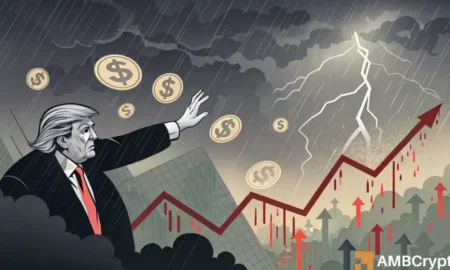The recent volatility in the Bitcoin market has been largely attributed to U.S. President Donald Trump’s announcement of sweeping tariffs. This sudden announcement caused a flurry of sell-side activity among short-term holders, resulting in a sharp drop in prices from $88,500 to $81,000. Interestingly, long-term holders also began moving dormant coins, suggesting a broader market response to the macroeconomic uncertainty.
One of the most notable trends during this period was the movement of over 1,057 BTC aged between 7 and 10 years, which were spent for the first time in years. This activity pushed the Spent Output Age Bands above the 50 threshold, indicating increased market activity among long-term holders. Additionally, over 18,930 BTC from holders aged 1 month to 18 months were also moved on-chain, reflecting a coordinated response to external news.
Large holders were observed preparing to sell, with one block recording an inflow of 2,500 BTC into exchanges, primarily Coinbase. This influx of capital aligned with Bitcoin’s price drop, confirming that capital was moving to exchanges rather than cold storage. Additionally, an anomaly surfaced on derivatives exchange Bybit, where the Taker Buy/Sell Ratio spiked to 5.3, indicating a surge in aggressive buyers.
The market movement during this period highlighted Bitcoin’s sensitivity to macroeconomic events, such as Trump’s tariff announcement. The presence of dormant coins, coupled with high-frequency selling from newer entrants, created a perfect storm that pushed prices lower before stabilizing. While some analysts see potential for Bitcoin to serve as a hedge against dollar weakening, for now, the market signals point to short-term fear and positioning adjustments.
Overall, the recent turmoil in the Bitcoin market underscores the importance of staying attuned to macroeconomic headlines and their potential impact on crypto assets. The coordinated response from different holder cohorts, as well as the influx of capital into exchanges, indicate a market that is highly reactive to external events. As the market continues to evolve, it will be crucial for investors to monitor these trends and adjust their strategies accordingly.

















